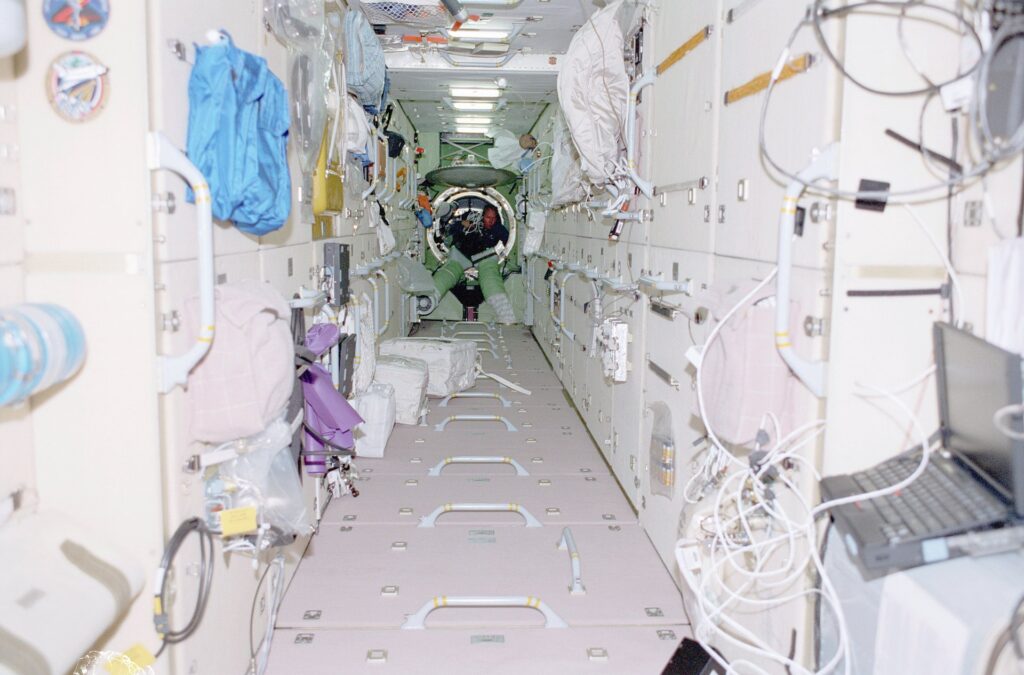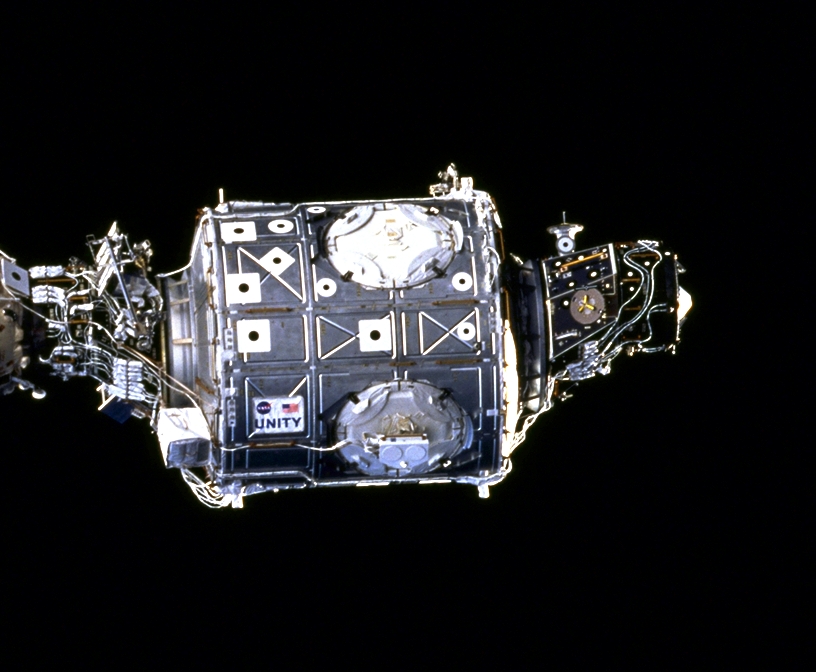It’s space week 2022! To celebrate we have some special not-so-romantic blog posts. This one takes a look at the International Space Station. How it came to be, what it does and when it’s due to be taken out of commission.
If you were ever to travel to the Earth’s lower orbit you would see the International Space Station zooming around at about 17,000 miles per hour. It needs that speed to maintain its orbit and not crash back onto the Earth’s surface.
becoming the international space station
The story of the International Space Station starts all the way back in the 1980s. NASA made a plan to launch a module space station called freedom into space.
For full context, a module space station is a space station made up of lots of different parts. Technology wasn’t and still isn’t capable of launching a full-sized or fully-built space station. So the stations are built-in smaller sections and launched to space separately. There is then the entertaining/ stressful/ nightmare job of attaching the modules together. Hope they don’t leave their nuts and bolts at home.
Module stations also allow old sections to be removed and replaced with newer parts. I suppose it’s a bit like LEGO. Actually, it’s exactly like LEGO. You start with a basic set and then make changes as you go along. LEGO in space- I can only dream.
The International Space Station contains parts that have been contributed by 15 countries. Good team effort!
With that said, back to Freedom.
NASA invited the European Space Agency (ESA) to be part of the Freedom programme and after some negotiation, the ESA agreed. This was a clever move by NASA as it meant other upcoming space programs wouldn’t become competitors to the Freedom program.
So NASA continued to build Freedom and the ESA began the Columbus programme which was, at its absolute basic, a module that was going to be connected to Freedom.
In September 1993 the Russian space agency joined the fray and what was to become the International Space Station hit top gear.
Pieces of the jigsaw
In 1998 enough parts were ready to start constructing the International Space Station. The first module launched was called Zarya which is a cargo block (always nice to have somewhere to store things). It launched on the 20th of November. The Zarya is probably best known for being where visiting spacecraft dock (a fairly important bit then!)

The second module launched on the 4th of December 1998. “Unity” which connects the Russian and the American sections of the ISS together. It’s also where the crew eat their meals together.

The main lab “Destiny” was added in February 2001 and is still used today as the main American laboratory. It wasn’t until 2008 that the ESA’s “Columbus” laboratory joined the station. To steal the ESA’s thunder the Japanese-built lab arrived later that year.
Slowly but surely the International Space Station became what it is today, like a giant-sized LEGO set.
Since 1998 new modules for the ISS have been launched every year, most recently in 2021. There are now 16 pressurised (have air in) modules on the International Space Station.
You may wonder how the modules were put together. I’m tempted to say carefully which is true, but a mixture of astronauts and robotics have combined to complete the ISS.
the first crew
In November 2000 the first crew arrived. Astronaut Bill Shepherd and Cosmonauts Yuri Gidzenko and Sergei Krikalev became the first crew to spend a length of time on the ISS. They spent four months onboard completing tasks in order to bring the ISS into operation. I wonder if they got given keys like when you move house? Their arrival started the now 22 years of continuous human presence in space.
On the 10th anniversary of the first crew arriving in 2010, over 200 people had lived on the International Space Station- mercifully not at the same time otherwise the queue for the toilet would have been horrid.
the toilet
Speaking of the toilet. One of the most commonly asked questions about space is how astronauts go to the toilet. I’ll be frank, astronauts wear nappies in their space suits. When you’re blasting off to space or a space walk you can’t just nip to the toilet so there is no choice but to have a nappy. NASA calls them Maximum Absorbency Garments (MAG)
But on the International Space Station, there is a toilet and it isn’t the most glamorous thing ever created. Function over comfort I believe the saying is.
To go for a wee there is a long hose pipe with a funnel on the top. The astronaut turns and opens the valve, which creates suction, and pees in the tube. I hope they don’t miss it, otherwise, their wee will be floating around their heads.
For a poo the method is similar.
There’s a container attached to a second pipe. On top of the container is a small hole and a bag. Because this is the not-so-romantic blog I will give you all the disgusting details. The astronaut has a poop in the bag, seals the bag then pushes it down into the container.
The bags full of poop then sit in the container for up to 10 days before the container is emptied.
Sometimes that poo is then transported back to Earth for lucky scientists to study to learn more about how the human body acts in space. For the poo not used for study, it has a hotter end.
The poo, toilet paper and things like gloves are put in air-tight containers which are thrown out of the ISS. These containers, and everything in it, burn up in the Earth’s atmosphere. So the next time you see something falling to Earth- just think, it could be astronaut poo.
Oh, I never mentioned what happened to the wee. The wee is recycled into drinking water. It is recycled for a good reason. Water is really heavy and would be difficult to constantly be sending it into space, so recycling the wee is a resource saver.
I hope one day I get to have a poo on the International Space Station- I’m adding it to my bucket list.
For a more in-depth tour of the space station’s toilet, you can watch this YouTube video from the ESA.
space food
This might not be as exciting as you are hoping. To be honest, astronauts eat normal food and it all comes in vacuum packs to make it easier to store. They have a very healthy and balanced diet when on the International Space Station as there are lots of health-related things to consider. They couldn’t be eating pizza every night.
But they have vegetables and fruits, and ice cream. They even have ketchup! The ISS gets a restock of food every two months.
Eating food in zero gravity is more of a challenge-nobody wants to get spice in their eye or a banana in their ear.
In 2019 the crew aboard the ISS cooked some cookies which is the first time a human has baked in space.
what is the international space station for?
The purpose of the International Space Station was to be a laboratory and an observation platform where astronauts could conduct numerous scientific experiments which would be vital for the advancement of the human race. In the later years, the space station became a platform for education.
science experiments
Loads of experiments have been done on the International Space Station. Human experiments, test human physical capabilities in space- looking at how our bodies react to long exposures to zero gravity, how we cope with eating space food, seeing how good our immune system is and how we cope with radiation. These experiments are vitally important for seeing what we need to do to survive in space for longer missions in the future.
They’ve examined small animals in space (they came from Earth), and microbiology- looking at bacteria and how they behave in space.
Plants have been studied in space along with a whole range of material testing that are too difficult to spell.
They’ve also developed space technology and systems which have led to huge advances in space technology.
exploration
The International Space Station provides a safe (or as safe as space can be) location to test new space technologies and spacecraft systems which will be required to travel long distances to the Moon and eventually Mars.
Without a platform to test technologies in space- we won’t be getting very far very soon.

education
What’s really cool is that astronauts on the International Space Station conduct experiments sent to them by school children. I can’t image the excitement you’d feel if your experiment was chosen to be conducted in space- what a wonderful way to inspire the next generation. They even have a friendly chat with classes as well- bet the zoom quality is somehow better than everyone else even from space though.
New dream- I want to speak to an astronaut on the ISS.
the end
In 2022 NASA announced that the International Space Station would be bought back down out of orbit in 2031. They plan to crash it into the Pacific Ocean.
You can track the International Space Station location here.
Related blogs
If you’ve enjoyed this International Space Station blog then be sure to check out these other space-themed related blogs.
